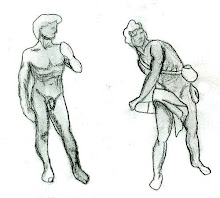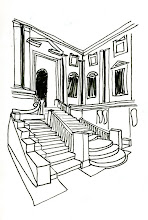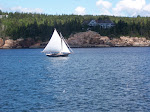Imagine a place where both creatures of the land and sea can coexist along side one another. A space were boundaries of shape, size, and light effects are constantly tested. That place is Kaiyukan Aquarium. Osaka Aquarium Kaiyukan, located in Minato is one of Japan’s most impressive aquariums. This complex inhabits creatures form the Pacific Rim. Its design incorporates both fascinating spaces from exhibit to exhibit as well as interesting color schemes that refer to aquatic life in the “Ring of Fire.”
I choose this structure as my area of study because I have a great appreciation for both architecture and marine biology. As I researched, I decided that this building would be interesting to learn more about because the firm that built it is an American based industry which specializes in “green building” and has projects abroad. On a more resent home front, Cambridge Seven Associates, Inc. also took place in the designing of the Baltimore aquarium.
According to a web source Kaiyukan is directly translated from Japanese to English as “Playing in the Sea Pavilion.” This is perfectly fitting for what the purpose of this building is; which is to educate civilians about their near by aquatic neighbors. As one begins their journey through the space they are welcomed by a traditional Japanese forest where the warmth of the sun kisses the tops of the plant life and a fresh breeze sways lazily through the greenery. There are fifteen tanks dramatically displaying what is the beginning of the transition to the marine life exhibit. Kaiyukan is one of the worlds largest aquatic life holding areas with total tank equmulation equaling up to 2.9 million gallons. Besides the learning of volcanoes that make up the Ring of Fire one can also expect to be enlightened in the Antarctica, Monterey Bay, the Great Barrier Reef, and other ecosystems that make up the depths of the ocean floor.
One of the toughest aspects of design was creating a structure that could hold 2.9 million gallons of water as well as 35,000 fragile specimens which represent about 380 different species. All while making sure tanks don’t leak temperatures are well kept and our pedestrian viewers can safely maneuver their way through the exhibits. This was done so through the strategic use of _(materials)__.
{Move into exterior and interior space values… discuss details in design…does this structure exude both commodity: firmness: delight? }
Work Cited:
1.http://architecturerevived.blogspot.com/2008/10/osaka-aquarium-kaiyukan-minato-japan.html
2.http://www.kaiyukan.com/eng/
3.http://www.c7a.com/Portfolio/aquariums/osaka_aquarium.asp?pos=0
4.http://vacation.away.com/attractions/travel-ad-cid330662-nara-attid154490-osaka-aquarium--kaiyukan--attraction.html
Subscribe to:
Post Comments (Atom)









2 comments:
what information you include here is background to the design...but you don't really talk about the design at all, and that's a significant shortcoming.
The Kaiyukan Aquarium is very similar to the Proximity hotel in many ways. The are both beautiful buildings that join with nature in ways of sustainability. The Kaiyukan aquarium was built mainly as an aquarium, but was designed to allow for comfort of aquatic life and guests. Its design incorporates both fascinating spaces from exhibit to exhibit as well as interesting color schemes that refer to aquatic life (Clarissa). The Proximity also incorporates fascinating spaces from room to room as well as the interior space of the lobby that allows for guests to relax and enjoy the serenity of the space.
Post a Comment